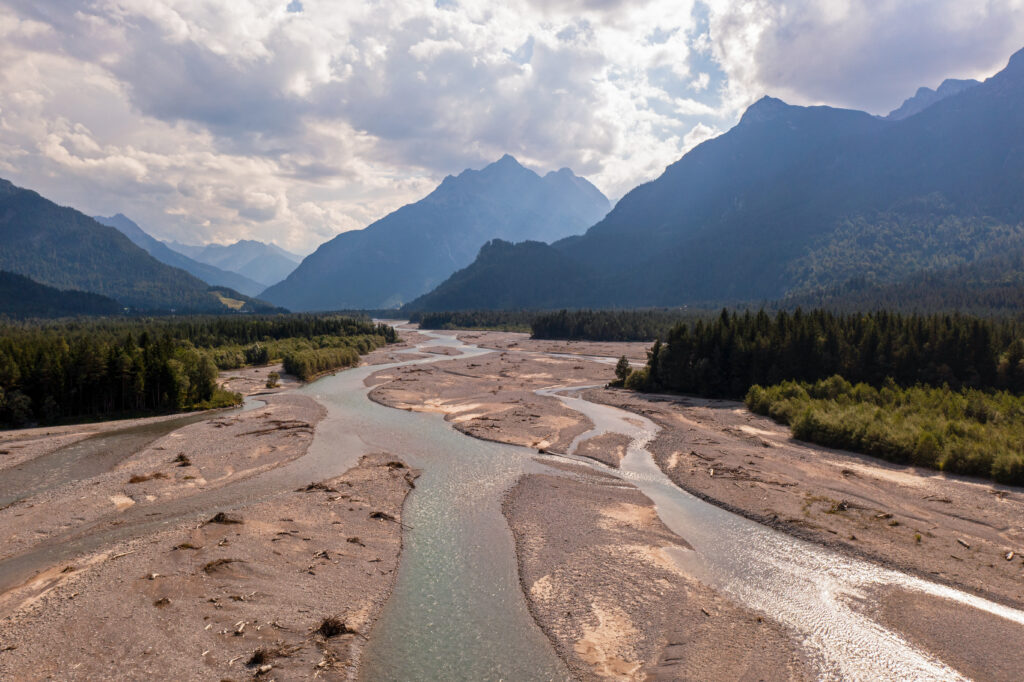Across Europe, more than 1.2 million barriers—including dams, weirs, and culverts—fragment rivers, choking the life out of freshwater ecosystems. Many of these structures are obsolete, yet they continue to disrupt the natural flow of water, sediments, and species. This has taken a heavy toll on biodiversity, contributing to a staggering 75% decline in freshwater migratory fish populations since 1970.
But momentum is building to reverse the damage.
In 2024, a record-breaking number of barriers were removed from rivers across the continent, as more communities, governments, and organisations embraced the dam removal movement to restore river health. Four countries—Bosnia and Herzegovina, Croatia, the Czech Republic, and Turkey—dismantled their first-ever river barriers, officially joining the growing movement to reconnect Europe’s rivers. In total, removals took place in 23 countries, underlining the scale and reach of this effort.
| Year | No. of removed barriers | No. of countries |
| 2020 | 101 | 11 |
| 2021 | 239 | 17 |
| 2022 | 325 | 16 |
| 2023 | 487 | 15 |
| 2024 | 542 | 23 |
Table 1. Number of removals and countries that reported removals to Dam Removal Europe each year
“It is reassuring to have another record-breaking year for barrier removals in Europe, as this is one of the most powerful tools for boosting the biodiversity of European rivers,” said Dragana Mileusnic, Director of Conservation at The Nature Conservancy in Europe. “This also indicates increased support among communities, as reconnecting rivers increases their resilience to climate change. We are happy to see Balkan countries removing their first barriers and hope to see accelerated efforts in this region, which is crucial for European freshwater biodiversity and climate resilience.”
Finland topped the count for the first time, with at least 138 barriers removed, followed by France, Spain and Sweden. Most of the dismantled barriers were small, obsolete structures—culverts and weirs—that can be removed cost-effectively but have a significant cumulative impact on river connectivity.
One standout project in Italy saw five barriers removed along an 11 km stretch of the Giovenco River, restoring its natural flow for the first time in decades. The reconnected river can once again support migratory fish and other wildlife. Its natural dynamics will rebuild healthier habitats for insects, birds, and iconic species like the otter, while also reducing erosion and improving resilience to floods.
Along with the record removals, 2024 was also the year the EU Nature Restoration Regulation came into force. This regulation includes a landmark target to restore at least 25,000 km of rivers to a free-flowing state by 2030, primarily through barrier removals. This effort also supports the global Freshwater Challenge, which the EU joined in 2024, aiming to restore 300,000 km of degraded rivers worldwide by the end of the decade.
“It’s remarkable to see countries like Finland and France each removing over 100 barriers, but the growing number of new countries joining the movement is even more inspiring,” said Julia Boverhoff, Freshwater Policy Advisor at The Nature Conservancy in Europe. “With the EU Nature Restoration Regulation now setting legally binding targets for river restoration, every European country has an opportunity to accelerate barrier removal and turn policy into action to restore the health and connectivity of our rivers.”

 Hrvatski
Hrvatski